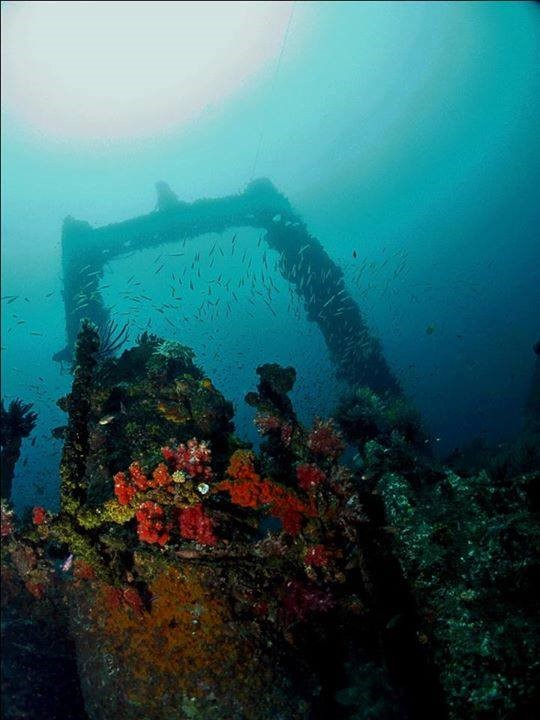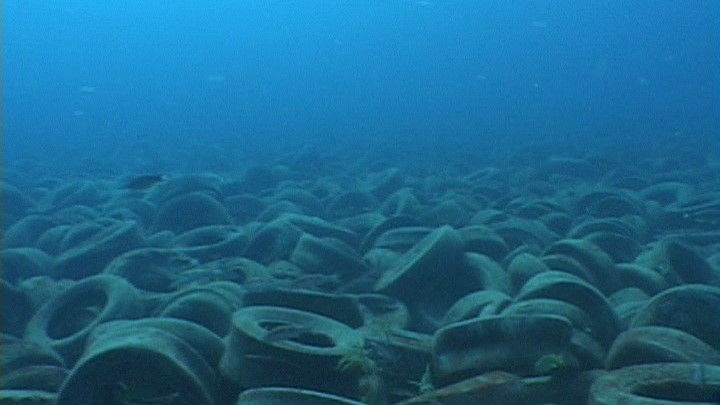By Beth Alexander
They’ve been in use for thousands of years, with cultures as diverse as the ancient Persians, the Romans and the 17th-century Japanese creating artificial reefs. The earliest written record is from South Carolina in the 1830s, where logs were used to create an artificial reef for improved fishing. These antique ideas and creations have changed little over the years, with many of the primary principals remaining in use.
An artificial reef can be defined as a manmade structure that’s been built to promote marine life in areas with generally featureless bottoms, to control erosion, to block ship passages, or even to improve surfing conditions. Not all artificial reefs are purpose-built; some are created when a ship sinks accidentally. Whether they have been purposely or accidentally constructed, artificial reefs all provide hard surfaces where algae and invertebrates, such as barnacles and corals, can attach and form intricate structures, as well as provide plentiful food for fish.
Variables such as depth, water temperature, current, and the seabed composition determine whether an artificial reef will be successful or not, but generally they all follow a predicable growth formation: Ocean currents encounter vertical structures, which creates plankton-rich upwellings, which in turn provide reliable feeding spots for small fish like sardines and minnows. These draw in pelagic predators, such as tuna and sharks; next come creatures seeking protection, such as groupers and eels, then the opportunistic predators such as barracuda, and finally, over months and years, the reef develops more encrusting algae, sponges, hard and soft corals.
Proponents tout the many benefits of artificial reefs; they enhance resources in coastal waters, create biological reserves, attract tourism, allow the study of a reef’s development and productivity and can help nature to restore itself if the natural reef has been overfished or damaged by pollution or anchoring. One of these success stories is the deliberate sinking of the aircraft carrier USS Oriskany in Pensacola, Florida. It’s the largest purpose-sunk artificial reef in the world, and has been successful due to good management and planning. This wreck and others like it, which have been intentionally sunk, have proven to be great additions to the marine environment, encouraging coral growth and increased fish populations, as well as enabling divers to explore new and interesting environments apart from the natural reef.
But conservation solutions must be executed properly in order to be effective; good ideas are not enough if they’re plagued by human error. Introducing a manmade structure into a sensitively balanced marine ecosystem must be done with the utmost care. Pollution and toxic materials, such as asbestos from wrecks or oil from abandoned rigs, can seep from the structures into the marine habitat. An artificial reef can also lead to a high concentration of fish in one small area, creating heightened competition between species, and also, ironically, worsening overfishing in one specific area.
The prime example of a conservationist-minded idea going horribly awry is Osborne Reef off the coast of Fort Lauderdale, Florida. In the 1970s, an ambitious reef-expansion project was put into place, with the idea being that old tires would spread across a 36-acre site to form an artificial reef. Between 1 and 2 million old tires were deposited in the water, but many of them were never properly secured. Many broke free and subsequently drifted into and damaged the natural reef, only 69 feet away; storms have taken some tires as far away as North Carolina. In addition to destroying much of the natural reef, their mobility has prevented new organisms from taking hold on the tires. The Osborne Artificial Reef project has since been recognized as a great environmental disaster in Florida, and although limited clean up efforts have been undertaken, most of the tires remain in the water.
The introduction of foreign objects can cause a disruption to the natural ecological balance, but if it is done with environmental care and thoughtful planning, a successful artificial reef can provide habitat and recreation for years to come. When installed correctly, the benefits far outweigh the concerns, and it can only lead to better and more conservation when divers can see a new reef first hand.



